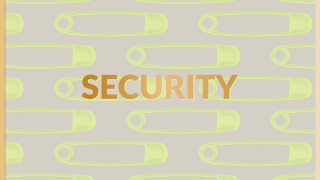On Friday, April 19th, UNAM’s Rectory Tower was violently invaded and captured by about twenty masked youngsters. Among their various demands, the reinstallation of five former students expelled from UNAM’s CCH (College of Science and Humanities; as a result of violent acts committed in February) stands out. The aforementioned expels were confirmed last Tuesday by the University Court and it doesn’t seem likely that the decision will change; however, the Rectory building is still under their control. On the other hand, the university authorities have lodged a complaint to PGR (Attorney’s General Office and, thus, have transferred the responsibility of deciding over the matter to the aforementioned authority.
It is imperative to place the Rectory takeover within the social context occurring in the last few months. In this regard, the notoriety of violent groups has increased: the anarchists from the December 1st disturbances, teachers from Oaxaca and Guerrero, self-defense and vigilante groups from that same region and the re-apparition of Zapatista groups. It seems that PRI’s return and its government’s first actions have modified the existing social arrangements, causing a reshuffling of all Mexican political forces. Every single of these groups have, more or less, cast doubt over the government’s capacity to uphold the rule of law. The Rectory takeover represents a special case, not for the challenge to remove a small group of youngsters but for the symbolism that involves using public force at a university. Given that scenario, past ghosts emerge, the ones that have justifiably delegitimized the public use of force. A new narrative that reproaches the use of public force under any circumstance has come up and, using the repression argument, it inhibits its use by the government. In that regard, it is not necessary to go back much further in order to find events that support this narrative, for example, the human rights violations (documented by the National Commission on Human Rights) on December 1st of last year.
The challenge ahead of authorities in charge of public force consists in modifying this narrative, something that was tentatively started with the removal of protestors in the Acapulco highway. It is not a casualty that the aforementioned authorities now have the democratic legitimacy support to use public force (something that didn’t happen on past XX century Mexican governments). However, in order for this change of paradigm to happen, it is necessary to be accompanied by facts that support it, which means impeding the use of force to become excessive. The difficulty of achieving a strategic use of force increases with new similar cases (such as Autonomous Metropolitan University (UAM) Rectory’s takeover) since the chances of making a mistake that will delegitimize its use and will enforce the current narrative. Maybe this is the true objective of violent groups.
All that said the following questions ensue: are these a series of coordinated demonstrations or are they independent from each other? Does an objective of defying the government’s authority exist or is this about emerging conflicts occurring in a natural way? Are famous politicians involved or are the protests run by citizens with their own causes?
Regarding UNAM, once the dialogue option was dismissed and since the legal complaint was lodged, the political costs of delaying police actions highly rise, since it transmits the message of a dubitative authority. The importance of sending the right message, in relation to the government’s capacity to uphold the rule of law, steadily rises with the upcoming energetic debate (the current administration’s biggest hope). Trying to pass such an important reform normally tends to polarize society and to favor the radicalization of specific social sectors. The government hopes to demonstrate its efficiency in responding to risky situations, if it doesn’t happen it will only contribute to the overheating of a pressure cooker. It will be crucial to know the exact nature of this issue.
CIDAC





Comments